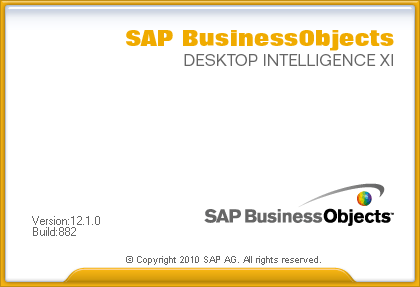When SAP BusinessObjects Business Intelligence 4.0 first went into general availability in 2011, SAP recommended splitting both the Adaptive Processing Server (APS) and Adaptive Job Server (AJS) into smaller pieces. However SAP KB 1868751 with the chipper title of Sporadic and Random Scheduling Failures now recommends a single Adaptive Job Server per node. The difficulty with splitting the Adaptive Job Server is that “This [configuration] will result in errors due to the additional complexity and cross communication” and also cause splitting headaches for the BI administrator.
You should have confidence in a single Adaptive Job Server because each job is forked off as a separate child process by the operating system. But having multiple Adaptive Job Servers if you really want them sounds like something that should work on paper but doesn’t in practice. The cynical part of my brain wonders if Apache Derby is responsible, as it is with BI4 monitoring.
If you currently have multiple Adaptive Job Servers per node in your business intelligence cluster, consider converting one of them to manage all services then disabling and eventually stopping the rest. Be sure to review the maximum jobs setting on each service type according to the number of CPUs per node. And verify that its destinations (BI Inbox, Email, FTP, and File System) are both enabled and configured identical to the multiple Adaptive Job Servers it replaces.
- SAP KB 1868751 – Sporadic and Random scheduling failures
- SAP KB 1950573 – Is it Necessary to Split the Adaptive Job Server in BI 4.x?
What is your experience with the Adaptive Job Server?



Thank you for confirming something I have thought as well.
I am curious how you feel about this when LCM is the candidate for a separate AJS. The SAP notes seems Webi and Crystal centric to me and I am not quite ready to concede there are not some limited cases where this is warranted. Running a typical report scheduling job is NOT a case where I would consider this. I would consider it for things like LCM, Platform search, etc.
As you probably have also discovered over time, LCM does not appear really well setup for clustered and distributed environments out of the box. As a result, I reconfigure things to better enable this (my own blog on this coming soon) and this is one case I will entertain splitting the AJS. The decision maker is if I am going to host LCM on a dedicated host that is part of a scaled and clustered landscape. In this case I only need the LCM related services running and don’t want other AJS child services running on this specific host.
It has never seemed to cause any conflicts and also seems to keep LCM from waiting in a queue to run a promotion job (granted that tuning an existing AJS can easily accommodate this need as well).
I definitely agree on the Derby thing…Its one of the first things I change. I go in the CMC and point Monitoring to the Auditing schema out the gate.
Chris,
An interesting thought and I look forward to reading your forthcoming article. So far, we haven’t had any issues leaving LCM in the Adaptive Job Server and prefer to turn over to our customers systems that follow SAP’s guidelines. Certainly open on this point and look forward to hearing your experiences with LCM.
Regards,
Dallas
Thanks for the followup Dallas, I’ll be sure to let you know when I publish something. I also always prefer to follow SAP guidelines and this is no exception. I personally find the referenced SAP note to have some conflicts with some info SAP communicated at TechEd as well as some SAP published wikis and blogs on SCN. I feel compelled to discuss this with them further and see how they respond.
I’d say 99% of the time I leave the LCM configuration running on a single node and the AJS intact. When heavily pressed to add redundancy and address heavy LCM loads then I’ll use the wiki info (http://wiki.scn.sap.com/wiki/display/BOBJ/How-to+cluster+Version+Management+in+SAP+BusinessObjects+Business+Intelligence+4.0 and http://wiki.scn.sap.com/wiki/display/BOBJ/From+DEV+to+QA+to+PROD+using+LifeCycle+Manager) to configure things a little differently. I’ll have to track down the article/note where the AJS scenario is mentioned; may have been in the APS Best Practices Doc. A separate AJS was mentioned very briefly in passing which does make me wonder if it was well vetted by the person who wrote it; especially in light of the SAP you mentioned here.
I did talk with SAP about it at TechEd recently and they indicated this is acceptable but ld sure love to see them publish something more formal on advanced LCM configuration so I can be more confident it will be a supported scenario.
I guess I also need to start using the right branding of Promotion and Version Management as well. 🙂
As a consulting professional I always find your articles very insightful and right on the money. This post is no exception and our real world experiences is why I ask your opinion. In fact, you’ve somewhat inspired me to start publishing some of my own experiences in the area of BI Platform architecture.
Please please please keep up your excellent work as always and thank you for the extra time you invest to shed light to inform the ecosystem on topics that are not always the easiest to track down!!